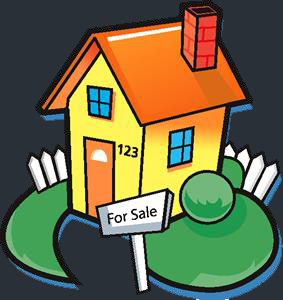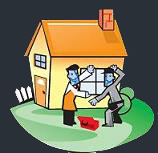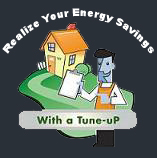 Homes that are over 15 years old cost a lot more to operate because energy technology has changed so fast. Nationwide, homebuyers are looking beyond the cosmetic to ensure their property has sufficient insulation, good windows, a reliable heating and cooling system and other current energy technology measures in place. Savvy buyers know that homes with today’s energy technology have a greater resale value, are more comfortable during winter and summer season, and help to control unpredictable energy bills. Homes that are over 15 years old cost a lot more to operate because energy technology has changed so fast. Nationwide, homebuyers are looking beyond the cosmetic to ensure their property has sufficient insulation, good windows, a reliable heating and cooling system and other current energy technology measures in place. Savvy buyers know that homes with today’s energy technology have a greater resale value, are more comfortable during winter and summer season, and help to control unpredictable energy bills.
What is Home Energy Tune-uP®
Tune-uP is a service that helps people lower their energy bills by identifying cost-effective technology upgrades. Tune-uP is very detailed and accurate.
- A certified Tune-uP Inspector performs an energy audit or inspection and checks the insulation, windows, heating and cooling systems, the water heater and appliances, and looks for cracks and gaps where air may be entering.
- The information gathered is analyzed using specialized software, and a Tune-uP Report is generated that lists recommended energy improvements with savings and cost estimates. It explains each recommendation, and discusses low and no-cost energy savings suggestions that will make a home feel more comfortable.
Energy Efficiency Upgrades Pay For Themselves
In most cases, energy efficiency upgrades pay for themselves in a few years through energy savings.
- Customers with no money to invest can still afford to invest in energy improvements by financing those items whose monthly energy savings are greater than their costs.
- Customers who want to make a wise investment can implement all recommended upgrades to increase home comfort and value further, and to obtain a good non-taxable return.
Can the investment be financed on the mortgage?
Yes! A new instrument, the Streamline(k) mortgage, covers small repairs up to $35,000. For conventional loans, it is up to the lender.
Home Energy Tune-uP®
- Increases comfort
- Saves you money
- Adds to a home’s value
- Improves the environment
The Four Easy Steps Of Home Energy Tune-uP®
- STEP 1 INSPECTION
A certified energy inspector examines and measures the home and finds all opportunities for energy savings.
- STEP 2 DETAILED ANALYSIS
Specialized software produces a Report which shows savings and costs for energy efficiency improvements.
- STEP 3 IMPLEMENTATION
The Report provides access to a database of contractors and a direct line to an energy expert.
- STEP 4 FINANCING
Each Report lists the group of improvements that, when financed, will save more than they cost.
Step 1: INSPECTION
- To reduce utility bills, the first step is to find out where you are wasting energy.
- To do this, you need a residential energy inspection—which should be done by a certified energy inspector who has no financial interest in the improvements recommended.
- The energy inspector will examine, measure, and evaluate the factors that affect energy use in your home, e.g., size of the home, efficiency of appliances, insulation, draftiness of rooms, and efficiency of heating and cooling systems (HVAC).
 Step 2: DETAILED ANALYSIS Step 2: DETAILED ANALYSIS
- The information gathered during the energy audit is analyzed using specialized software to produce a comprehensive Home Energy Tune-uP® Report. The Report shows which energy-efficiency improvements would reduce energy costs and make the home more comfortable. The analysis takes into account regional variables such as local weather, implementation costs, and fuel prices.
- The Report contains estimates of the savings, costs and payback for each energy-efficiency recommendation. It identifies the group of improvements that, if financed, will save more on energy bills than it costs. These are the improvements that everyone can make since they require no out-of-pocket cost when financed.
- The detailed Recommendations section enables contractors to provide preliminary cost estimates without a visit to your home. It also explains how to get the best energy savings from these improvements by listing related no-cost low-cost measures that you can take.
 Step 3: IMPLEMENTATION OF THE REPORT
Step 4: FINANCING Step 3: IMPLEMENTATION OF THE REPORT
Step 4: FINANCING
Energy improvements are unique because they reduce energy bills thereby increasing disposable income.Financing energy efficiency improvements as part of your home mortgage is the best way to go. You have the advantage of (1) low monthly payments due to a 30-year term and a relatively low interest rate; and (2) interest that is deductible from your income tax. The improvements listed in the Improvements that Save More than they Cost section of the Tune-uP Report will automatically qualify for financing since they increase the value of the house without reducing disposable income.
- The FHA Streamlined (k) Limited Repair Program is intended to facilitate uncomplicated rehabilitation and/or improvements to a home for which plans, consultants, engineers and/or architects are not required.
- The Streamlined (k) program includes the following energy-efficiency improvements:
- Upgrade of heating/cooling systems and water heaters;
- Weatherization, including insulation, seal-up and window replacement;
- Purchase and installation of appliances, including refrigerators, freezers, and washers/dryers.
- It has no minimum repair cost threshold.
- It has a maximum mortgage amount for repair costs of $35,000.
- It can be issued by any FHA lender.
- It does not require a rating.
- See HUD Mortgagee Letter 2005-50 for details of the program.
 The unsecured Fannie Mae Energy Loan for $1,000 to $20,000 is available from a few lenders. The Energy Loan’s 10-year term and interest rates are generally better than those offered by contractors or suppliers, though not as good as the Streamlined (K). The unsecured Fannie Mae Energy Loan for $1,000 to $20,000 is available from a few lenders. The Energy Loan’s 10-year term and interest rates are generally better than those offered by contractors or suppliers, though not as good as the Streamlined (K).
- Some electric or gas utilities offer financing for energy efficiency improvements, as well as rebates for energy efficient appliances and heating and cooling systems. Check your utilities' website for more information about financing and rebates that may be available. See the Energy Star Rebate Locator
|

 Homes that are over 15 years old cost a lot more to operate because energy technology has changed so fast. Nationwide, homebuyers are looking beyond the cosmetic to ensure their property has sufficient insulation, good windows, a reliable heating and cooling system and other current energy technology measures in place. Savvy buyers know that homes with today’s energy technology have a greater resale value, are more comfortable during winter and summer season, and help to control unpredictable energy bills.
Homes that are over 15 years old cost a lot more to operate because energy technology has changed so fast. Nationwide, homebuyers are looking beyond the cosmetic to ensure their property has sufficient insulation, good windows, a reliable heating and cooling system and other current energy technology measures in place. Savvy buyers know that homes with today’s energy technology have a greater resale value, are more comfortable during winter and summer season, and help to control unpredictable energy bills.
 Step 2: DETAILED ANALYSIS
Step 2: DETAILED ANALYSIS
 Step 3: IMPLEMENTATION OF THE REPORT
Step 3: IMPLEMENTATION OF THE REPORT The unsecured Fannie Mae Energy Loan for $1,000 to $20,000 is available from a few lenders. The Energy Loan’s 10-year term and interest rates are generally better than those offered by contractors or suppliers, though not as good as the Streamlined (K).
The unsecured Fannie Mae Energy Loan for $1,000 to $20,000 is available from a few lenders. The Energy Loan’s 10-year term and interest rates are generally better than those offered by contractors or suppliers, though not as good as the Streamlined (K).